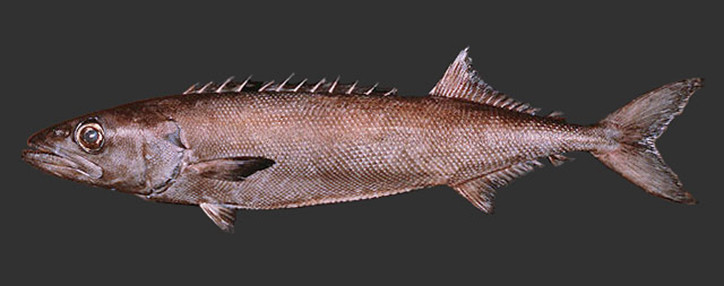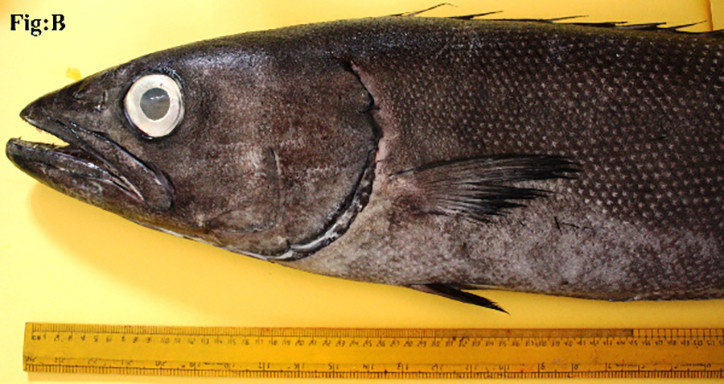Fish of the Ruvettus genus of the Gempylidae (snake mackerels or escolars) family of the Scombroidei suborder of the Scombriformes order of the Percomorpha clade of the Acanthopterygii superorder.

(Oilfish. Photo by © John E. Randall. fishbase.org)
Oilfish (Ruvettus pretiosus) was first described in 1829 by the Italian naturalist Anastasio Cocco (1799-1854).
It inhabits the depth of 100-800 meters, usually 200-400 meters. It lives near the bottom, far from the coast, alone or in pairs. The maximum recorded length is 300 cm, specimens up to 150 cm long are more common. The maximum weight is 63,5 kilograms. It feeds on fish, crustaceans, and squid.

(Oilfish. Photo by © K. Kannan. fishbase.org)
It is a permanent inhabitant of the Adriatic Sea. It is more common in the central and southern parts of the Adriatic.
The flesh is very fatty. When consumed in large quantities, it can cause indigestion, and even poisoning. In small quantities, it is considered a delicacy.
Names of oilfish (Ruvettus pretiosus) in other languages as follows:
Ρουβέττος (Ruvetos) (Greek), Escolar clavo (Spanish), Ruvetto (Italian), Ölfisch (German), Peixe-escolar (Portuguese), Kostropak (Polish), Рувета (Ruveta), Рыба–масло (Ryba–maslo) (Russian), Ljuskotrn (Serbian, Croatian), Ljuskotrn (Turkish), Rouvet (French).